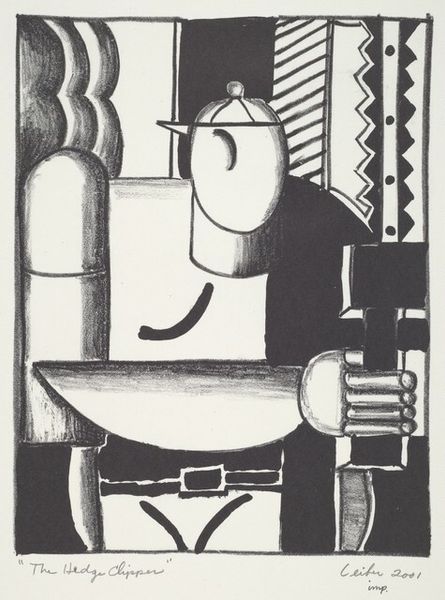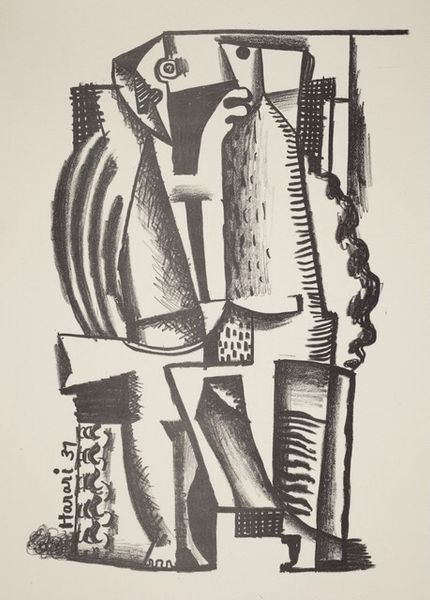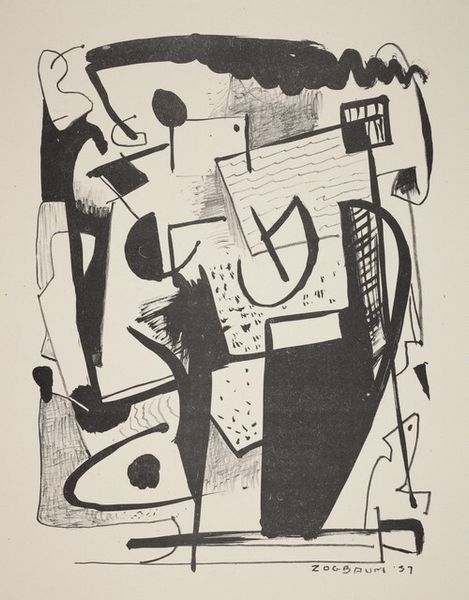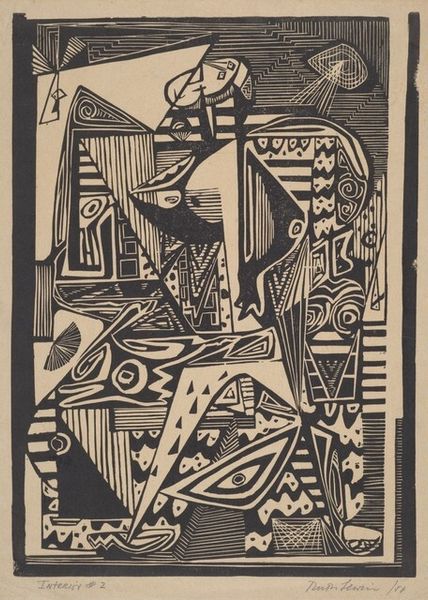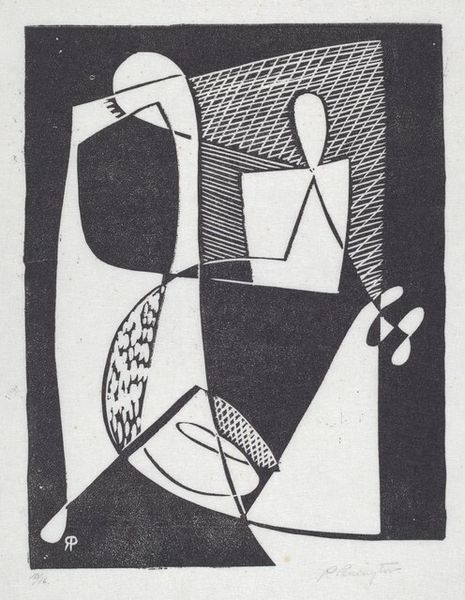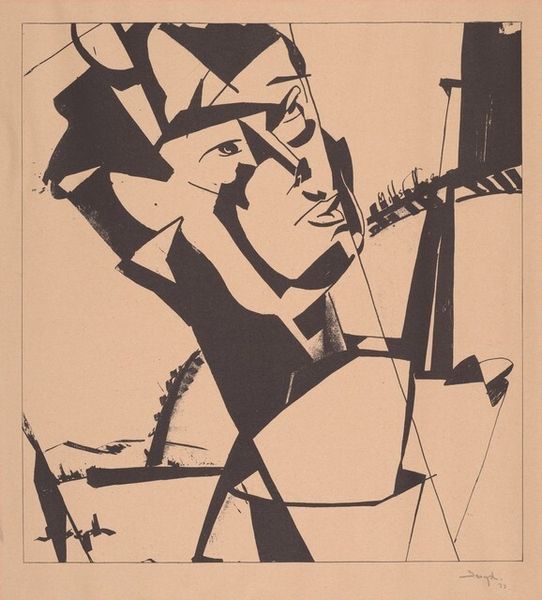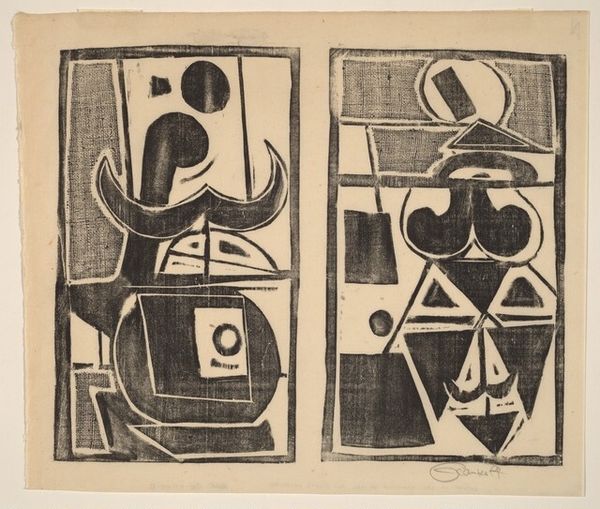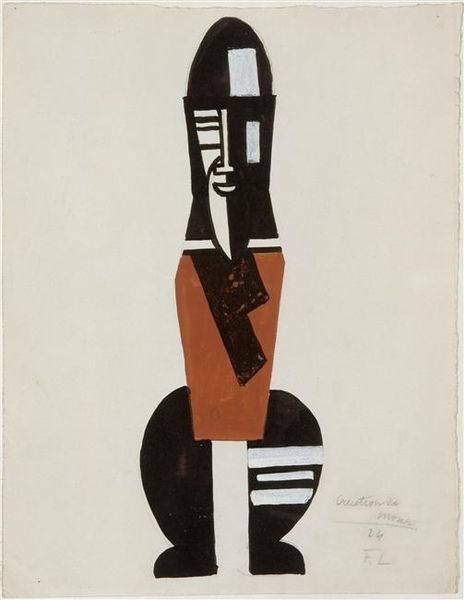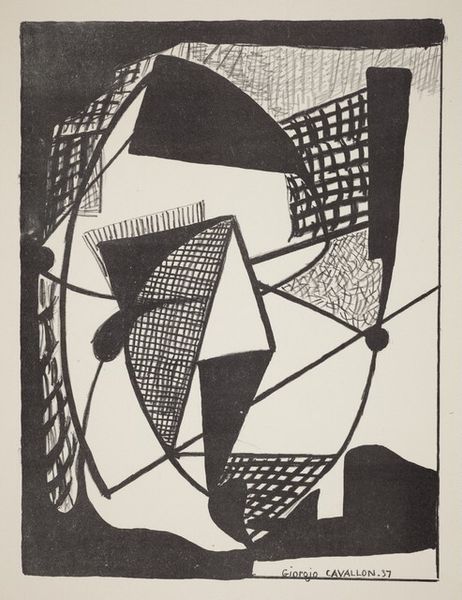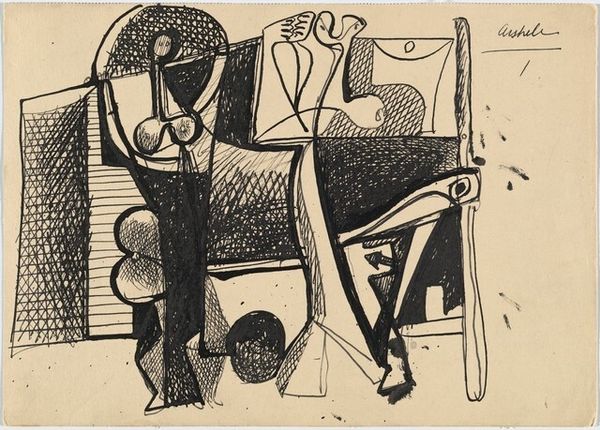
Dimensions: plate: 22.9 × 17.5 cm (9 × 6 7/8 in.) sheet: 27.6 × 21.2 cm (10 7/8 × 8 3/8 in.)
Copyright: National Gallery of Art: CC0 1.0
Curator: Erich Müller-Kraus's 1932 linocut, titled "Revolution," immediately grabs attention with its striking monochrome composition. The printmaking process, inherent to linocut, emphasizes bold contrast. The work presents a tension between figuration and geometry. Editor: It certainly does, there's a real sense of unease evoked through the figures; a faceless crowd flanking what seems like a symbolic central figure of authority or perhaps even…sacrifice? There's a strong feeling of questioning woven into it. Curator: The flat colour and historical fashion add to the drama of the composition, highlighting the texture achieved by carving into linoleum. Consider how Müller-Kraus employed tools like gouges to create this bold imagery from a single block of material. Editor: Absolutely. Contextually, post-World War I Germany witnessed the rise of fascism. I see this print as reflecting the anxieties and ambiguities that pervaded that era. That lone figure with a question mark hovering above it feels incredibly pertinent in an age of uncertainty. What questions are being asked about power, obedience, and the human condition? Curator: Linocut, as a medium, lent itself to mass production, enabling artists to disseminate their messages widely and at relatively low cost. Was this artwork presented as propaganda? What do we know about where Müller-Kraus fit into that society? Editor: I believe that’s the real point here; "Revolution," through its symbolic language, acts as a form of social commentary and encourages reflection on that period's profound upheavals. We have the cross on a central figure, a visual pun embedded into this "Revolution". It’s loaded with political implications. Curator: Understanding the limitations and possibilities inherent in the linocut process enables us to more clearly appreciate Müller-Kraus' artistic vision and skill. It provides a context, I think, for considering revolutionary materials. Editor: Indeed, Müller-Kraus gives us a sharp image to contemplate and deconstruct a turbulent chapter in history. Curator: Yes, this examination reminds us that revolutions can take many forms: the toppling of social norms, a radical shift in art, and yes, of course, even something as deceptively simple as a black and white print.
Comments
No comments
Be the first to comment and join the conversation on the ultimate creative platform.
